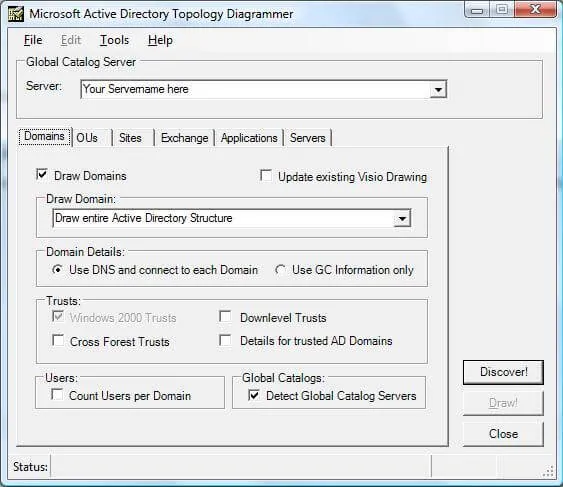The Microsoft Active Directory Topology Diagrammer is a really useful tool when documenting Active Directory domains of any size.
With the Active Directory Topology Diagrammer tool, you can read your Active Directory structure through Microsoft ActiveX Data Objects (ADO). The Active Directory Topology Diagrammer tool automates Microsoft Visio to draw a diagram of the Active Directory Domain topology, your Active Directory Site topology, your OU structure or your current Exchange 200X Server Organization.
With the Active Directory Topology Diagrammer tool, you can also draw partial information from your Active Directory, like only one Domain or one site. The objects are linked together, and arranged in a reasonable layout that you can later interactively work with the objects in Microsoft Visio.
The Diagrammer is very flexible and allows the user to include and exclude granular information such as the following:
- domain(s) (child etc.)
- Site(s )
- OUs
- Administrative Groups
- Exchange connectors (Routing, SMTP, X.400, Notes etc.)
- Users in the domain(s)
- Trusts
- User Count
- Global Catalog servers
- IP and SMTP Site links
- Subnets
- Inter/Intra Site Replication Connections
- Number of Mailboxes
- Application Partitions
- Servers and OS version information (with color coding)
In order for the tool to do a Active Directory discover you need to configure the tool to point to a Global Catalog server in the environment.
Supported operating systems are Windows 2000, XP, Server 2003, and Vista. You’l need .NET 2.0 and Visio 2003 or 2007. The Active Directory team has a nice tutorial on how to use this tool, along with the Group Policy Management Console, to document your Active Directory infrastructure.





